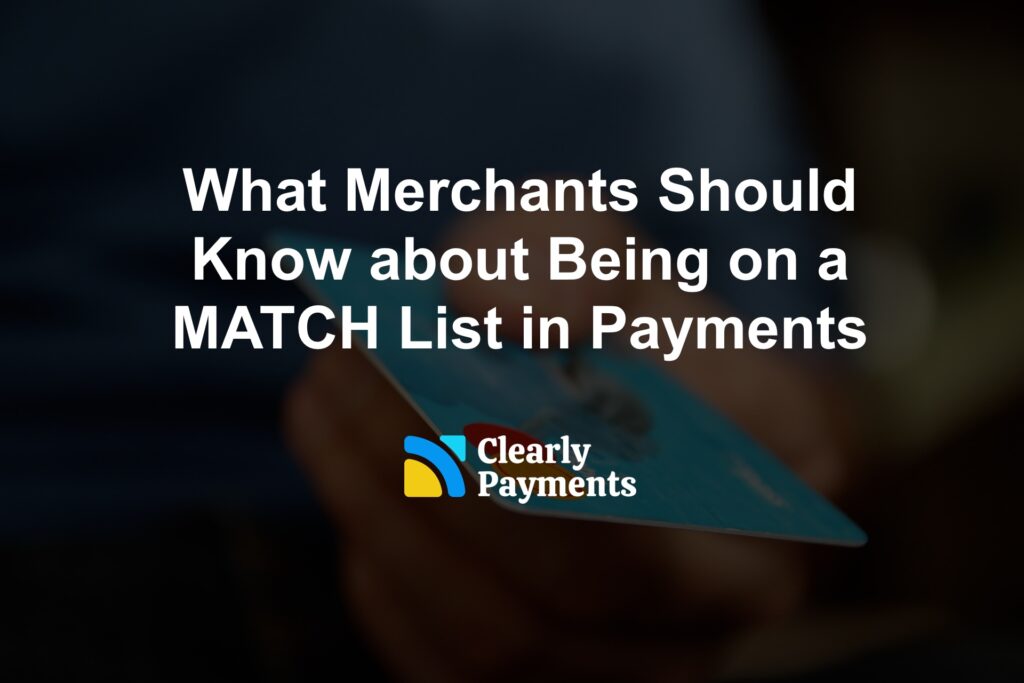If you’re a merchant, getting on the MATCH list can feel like hitting a brick wall when it comes to processing payments. In this article, we’ll break down what the MATCH list is, why it matters, and what you can do if you find yourself on it.
What Is the MATCH List?
The MATCH (Member Alert to Control High-risk) list is a tool used by acquiring banks and payment processors to manage risk. Essentially, it’s a database that contains information about merchants who have had their credit card processing services terminated due to various reasons deemed as high-risk. If you’re on this list, getting approved for a new merchant account can be a significant challenge.
Why Is the MATCH List Important for Payment Processors?
Payment processors use the MATCH list to evaluate the risk associated with a potential merchant. The list acts as a safeguard, helping processors avoid entering into business with merchants who have a history of activities that could lead to financial loss, such as excessive chargebacks or fraud. Only acquiring banks have the authority to add or remove a merchant from this list, making it a powerful tool in the payments industry.
How Do Merchants Get on the MATCH List?
Being placed on the MATCH list can happen for several reasons, all of which indicate that the merchant poses a heightened risk. Common reasons include:
- Excessive Chargebacks: If a merchant consistently exceeds the industry threshold for chargebacks, they may be flagged as high-risk.
- Fraudulent Activity: Involvement in fraud, whether intentional or not, can lead to a merchant being added to the list.
- Non-Compliance with PCI Standards: Failing to adhere to Payment Card Industry Data Security Standards (PCI DSS) can result in a listing.
- Bankruptcy or Insolvency: Financial instability or inability to meet obligations can trigger a MATCH listing.
- Illegal Activities: Engaging in activities that violate legal or industry standards is a surefire way to end up on the list.
Each of these actions not only impacts your relationship with your current processor but can also severely limit your options when seeking new processing services.
What Happens When Merchants Get Put on a MATCH List?
When merchants get put on a MATCH list, they typically lose their existing merchant account. Being added to the list usually happens after a payment processor terminates the merchant’s account due to activities considered high-risk.
When merchants are placed on the MATCH list, they face significant challenges in obtaining new merchant accounts, as most payment processors view them as high-risk. This can lead to higher processing fees, stricter contract terms, or even outright denial of service, making it difficult to continue accepting credit card payments.
Can You Get Off the MATCH List?
Getting off the MATCH list isn’t easy, but it’s not impossible. There are a few scenarios where removal might be possible:
- Five-Year Expiration: Merchants are automatically removed from the list after five years, assuming they haven’t been re-listed.
- Mistake or Error: If a merchant was placed on the list due to an error or without sufficient justification, they can appeal to the acquiring bank that listed them.
- PCI Compliance: Merchants who were listed due to non-compliance with PCI standards can be removed if they later achieve and prove compliance.
It’s worth noting that only the acquiring bank that placed you on the list can request your removal, and in some cases, legal assistance might be necessary.
Options for MATCH Listed Merchants
If you find yourself on the MATCH list, continuing to operate your business can be challenging, but there are options:
- High-Risk Payment Processors: Some payment processors specialize in working with high-risk merchants, including those on the MATCH list. These processors may offer less favorable terms, such as higher fees or reserve requirements, but they can help you continue accepting credit cards.
- Alternative Payment Methods: Consider accepting payments via alternative methods like ACH, eChecks, or even cryptocurrency. These methods may not require the same level of scrutiny as traditional credit card processing.
- Cash Transactions: While not always practical, reverting to cash-only transactions eliminates the need for a merchant account entirely.




